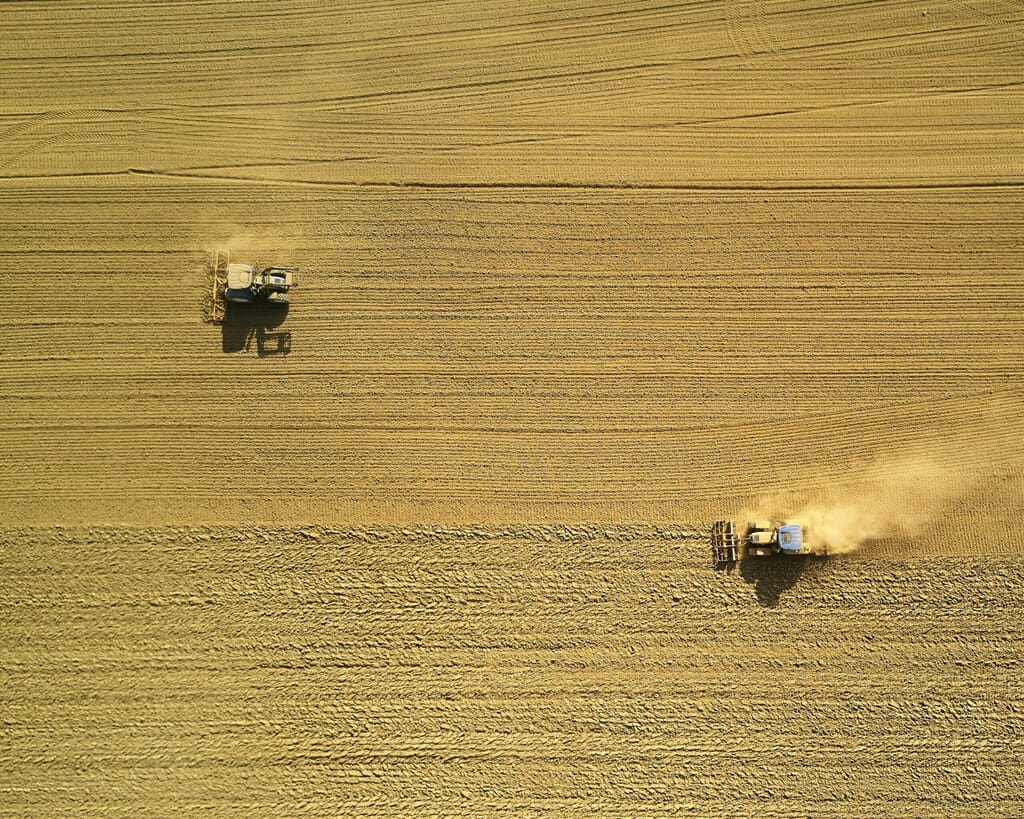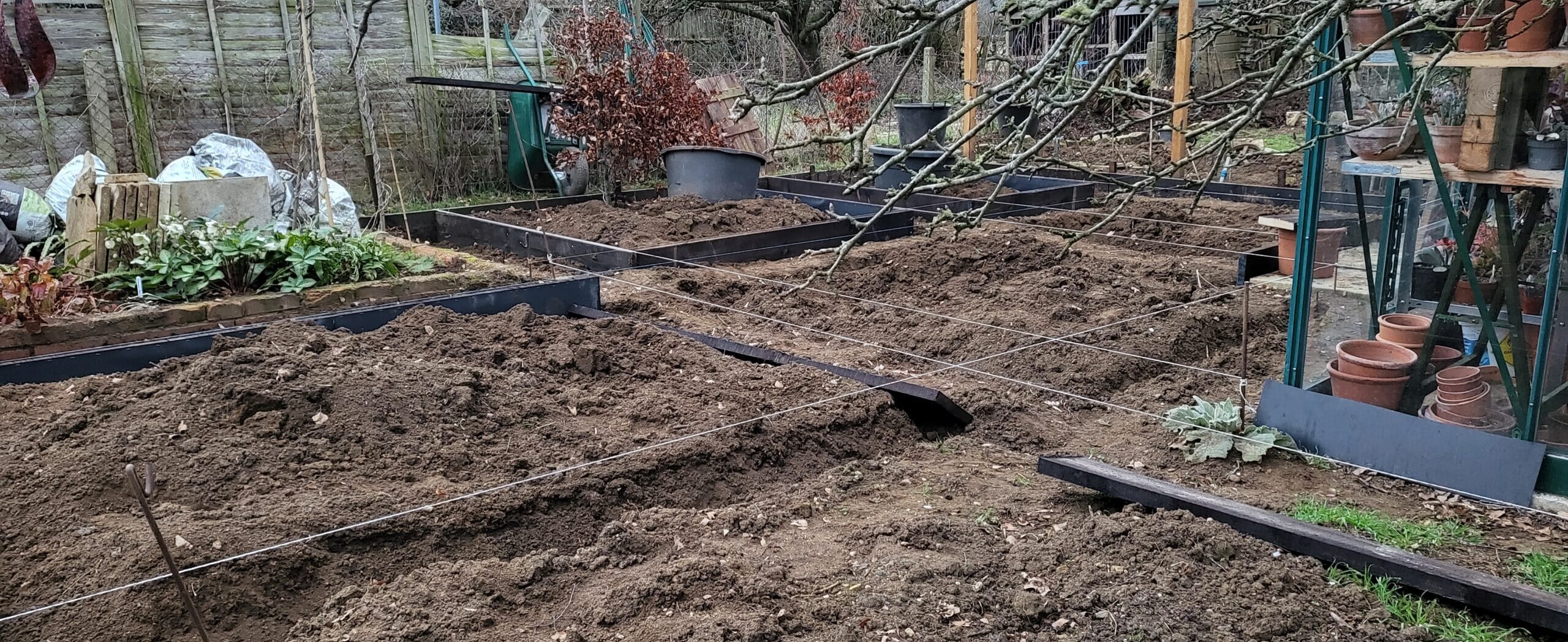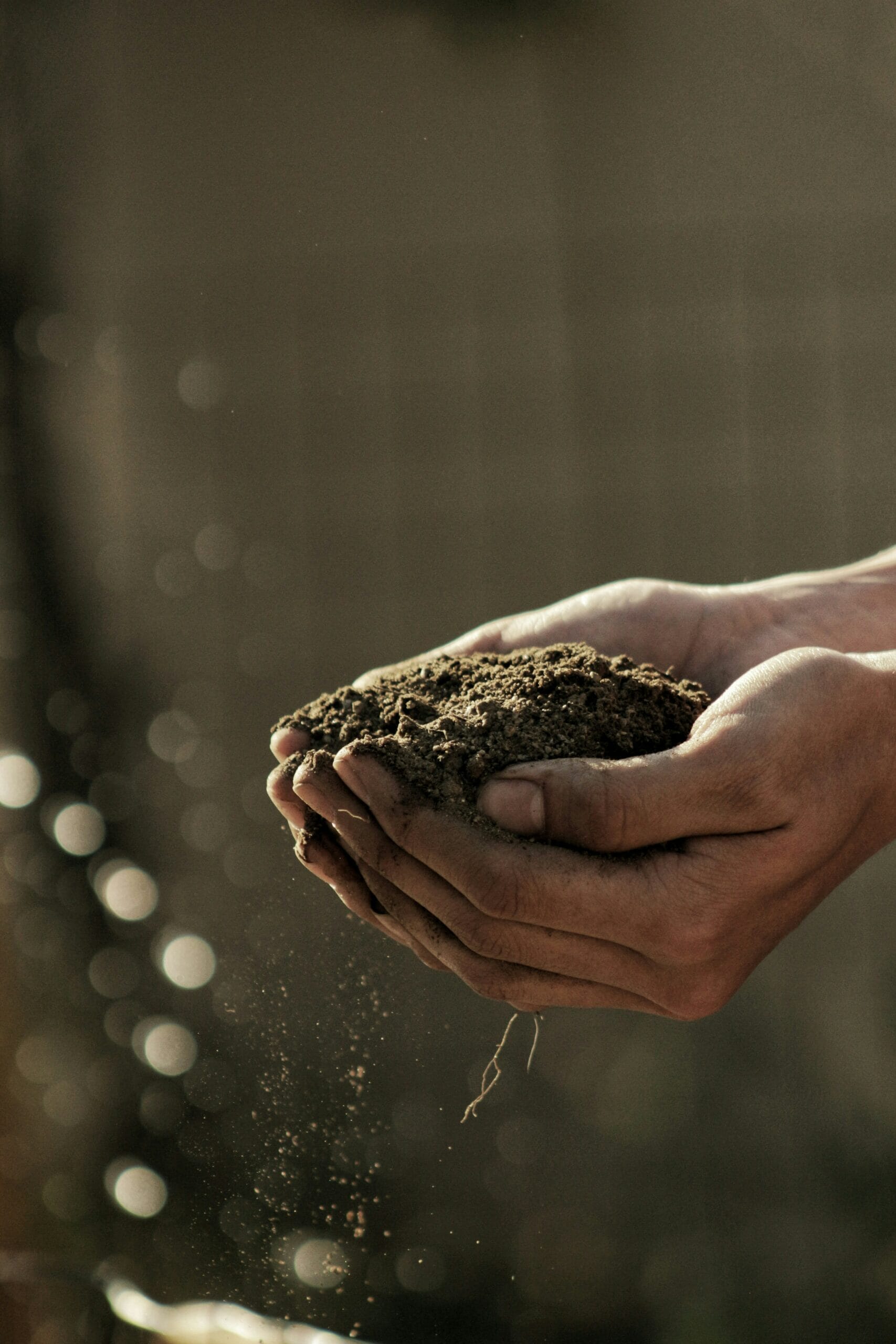Soil is precious. It is a dynamic, living organism and needs to be treated with respect. Its complex ecosystem features a unique combination of air, water, organic matter, minerals and billions of living organisms. To put it simply, healthy soil is vital to maintaining life on our planet.
We delve into the importance of soil health and why gardeners should make use of the ‘no dig’ gardening method.

There are 3 main factors to maintaining healthy soil. These factors are all interlinked, offering substantial benefits for soil biodiversity.
Physical refers to the structure of the soil having sufficient air and water pockets, allowing plant roots, nutrients and microbial life to grow and function. A good structure will act like a sponge, retaining and releasing water when required.
Chemical alludes to the components that dictate the soil’s pH level. The closer to a neutral pH level, the greater the diversity of plants and organisms.
Biological is concerned with healthy soil biodiversity that processes nutrients for plant use and maintains the structure.
A good indication of healthy soil is the number of worms found within it. They help to digest waste materials into usable constituents, cycle carbon and nutrients within the layers of soil, and improve the drainage via burrowing.
We imagine soil to be constant and indestructible; however this is not the case. Soil is incredibly fragile. It takes thousands of years to create an inch of fertile topsoil, but it can be destroyed in minutes.
A well-structured, healthy soil provides a rooting medium for plants and supplies the necessary nutrients for good crop yields.
As soil is a carbon sink, it stores carbon dioxide and other greenhouse gases that would otherwise be released into the atmosphere.
Healthy soil filters water, which helps to ensure clean drinking water. If the structure of the soil is good, it will help to drain excess water more quickly, preventing or delaying flooding.
By providing plants with the correct levels of nutrients, they will become better equipped to resist pests and diseases.
A healthy soil provides a dynamic environment, enabling billions of organisms to thrive.

The biggest threat to soil health is intensive farming. Ploughing soil destroys the structure, making it vulnerable to erosion. Growing the same crop repeatedly in the same ground, combined with the overuse of irrigation systems, depletes valuable nutrients and increases the volume of harmful salts in the soil.
Methods to counteract these issues, such as excessive use of certain fertilisers and pesticides, can speed up the breakdown of organic matter and reduce the levels of biodiversity, starving the microbial populations that maintain a healthy soil. Disturbing the natural balance enables unwanted pests, diseases and pathogens to thrive.
On a more domestic level, the health of your garden plants relies on what is contained within the soil. Aside from the visible organisms, plants are engaged in a symbiotic relationship with a network of underground beneficial fungi called Mycorrhizae. This is a branching communication and supply network for living plants. It serves as an extension to the plant’s existing root system, equipping the plant with more tolerance to cope with environmental stresses.
The fungal network supplies the plant’s roots with accessible nutrients and, on a molecular level, communicates changes in the condition of the soil. In exchange for this, the fungal networks receive photosynthesized products. This mutually benefits both parties, facilitating healthy plant growth and the distribution of resources.
So, the act of digging over a patch of garden to replant disturbs the fungal networks that plants rely on, making them weaker and more susceptible to pathogens or other factors such as drought. It can also release stored carbon that’s locked within the soil.
It is important to educate and encourage farmers, growers and consumers about alternative methods of growing and what to expect from our soil health. Crop rotation helps to retain the complexity of nutrients within the soil, whilst sowing crops helps to manage soil erosion, retain soil moisture, and improve soil quality and soil fertility.
There has been much discussion around the benefits of the ‘no dig’ method, which reproduces the biological activity of decomposition and natural recycling of materials.
The process involves covering the existing soil with a deep layer of about 10cm of organic matter, often referred to as mulch, such as garden compost or well-rotted manure. This allows the existing soil’s ecosystem to remain undisturbed, enabling worms and other organisms to maintain a healthy soil. Although some perennial weeds (such as those with stronger root systems) will need to be pulled out, only a small area will be disturbed. The whole root may not come up, but it will weaken the plant.
We recommend mulching your soil every autumn. Not only does it help to suppress the regrowth of persistent weeds; it also provides warmth to overwintering perennials and helps to replenish the soil’s nutrients after the long growing season. It also re-establishes the desired structure for improved air circulation, allowing for better drainage.

Using the ‘no dig’ method – raised beds filled with compost and then planted into. Good crop for harvesting!
Healthy soil provides us with food, sustains our habitats for wildlife, enables ecosystems to function, and reduces the negative impacts of environmental issues such as droughts and flooding. Soil is the most important natural resource we have. The health of our soil is fundamental for supporting the growth and survival of ecosystems across the globe; that’s why we must do everything we can to protect it.
If you’re looking to increase your soil health, Gardens by Keltie & Clark can help. As advocates of sustainable gardening in the Cotswolds, we can help enhance your soil biodiversity by designing healthy outdoor living spaces that are guaranteed to thrive. Get in touch to discover how we can elevate your outdoor space into a sustainable gardening haven today.


